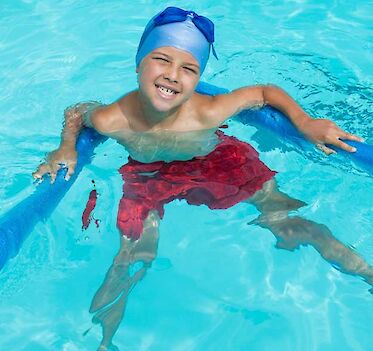Everything You Need to Know About Recognizing, Treating, and Preventing This Summertime Ear Infection
Diving into Swimmer's Ear
Everything You Need to Know About Recognizing, Treating, and Preventing This Summertime Ear Infection
Summer is the season of fun, friends, and swimming! Whether you're diving into a pool, splashing in the ocean, or enjoying a relaxing dip in the lake, swimming is a quintessential summer activity. However, staying aware of potential risks, such as swimmer's ear is important. In this blog, we'll discuss the symptoms, treatments, and prevention tips for Swimmer's Ear to ensure you have a safe and enjoyable summer.
What is Swimmer's Ear?
Swimmer's Ear, also known as otitis external, is an infection of the outer ear canal. The infection typically occurs when water remains trapped in the ear after swimming. This creates the perfect moist environment for bacteria growth. While it can be uncomfortable and painful, Swimmer's Ear is usually treatable and preventable.
Symptoms of Swimmer's Ear
Recognizing the symptoms of Swimmer's Ear early can make all the difference. Here are the key signs to watch out for:
Itching in the Ear Canal: One of the earliest signs of Swimmer's Ear is itching in and around the ear canal.
Redness Inside the Ear: Look for redness and inflammation inside the ear.
Discomfort or Pain: Mild to severe ear pain, especially when touching or pulling the earlobe.
Fluid Drainage: Clear, odorless fluid may drain from the ear.
Fullness in the Ear: A feeling of fullness or blocked sensation in the ear.
Reduced Hearing: Temporary hearing loss or a muffled sound.
Swelling of the Ear Canal: In some cases, the ear canal may become swollen.
Treatments for Swimmer's Ear
If you suspect that you or a loved one might have Swimmer’s Ear it is best to seek medical attention as soon as possible, but don't worry—there are several ways to treat it effectively:
Ear Drops: Your healthcare provider may prescribe antibiotic ear drops to fight the infection. In some cases, corticosteroid ear drops are used to reduce inflammation.
Pain Relievers: Over-the-counter pain relievers, such as ibuprofen or acetaminophen, can help alleviate pain and discomfort.
Keeping the Ear Dry: Avoid swimming or getting the affected ear wet until the infection has completely healed.
Avoid Inserting Objects into the Ear: Do not use cotton swabs or other objects to clean the ear, as this can further irritate the ear canal.
Prevention Techniques
Preventing Swimmer’s Ear is all about keeping the ear canal dry and clean. Here are some tips that can help keep you out of the doctor's office:
Keep Ears Dry: Use a towel to dry your ears thoroughly after swimming or showering. Tilt your head to each side to help water drain out of the ear canal.
Use Earplugs: Consider wearing earplugs while swimming to prevent water from entering the ear canal.
Avoid Inserting Objects: Do not insert cotton swabs, fingers, or other objects into your ears. This can cause irritation and increase the risk of infection.
Drying Drops: Use over-the-counter drying ear drops after swimming to help evaporate any trapped water.
Maintain Ear Health: Keep your ears clean and healthy, and avoid using harsh chemicals or hair products that can irritate the ear canal.
By following these tips, you can enjoy all the fun and excitement swimming has to offer, while keeping your ears healthy and infection-free! If you suspect you have swimmer's ear or need medical advice, don't hesitate to contact HealthCARE Express Urgent Care or book a virtual visit! Our providers are just a click away, ready to help you with all your healthcare needs.
